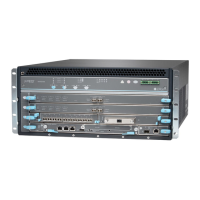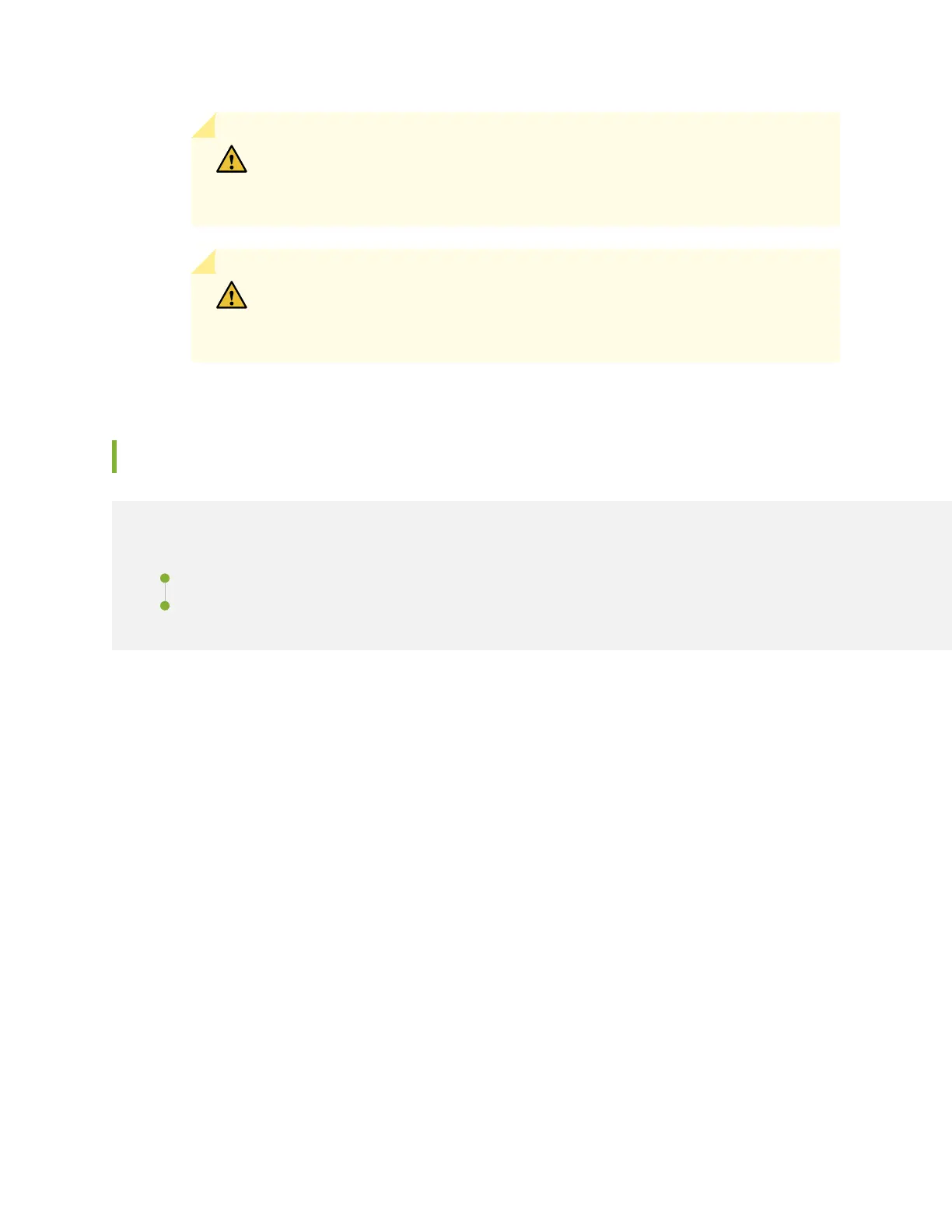CAUTION: Avoid bending a fiber-optic cable beyond its minimum bend radius.
An arc smaller than a few inches in diameter can damage the cable and cause
problems that are difficult to diagnose.
CAUTION: Do not let fiber-optic cables hang free from the connector. Do not
allow the fastened loops of a cable to dangle, which stresses the cable at the
fastening point.
Replacing SRX5400 Services Gateway Transceivers
IN THIS SECTION
Removing an SRX5400 Services Gateway Transceiver | 311
Installing an SRX5400 Services Gateway Transceiver | 313
Removing an SRX5400 Services Gateway Transceiver
Transceivers are installed in a MIC or SPC. Transceivers are hot-insertable and hot-removable. Removing
a transceiver does not interrupt the functioning of the card, but the removed transceiver no longer receives
or transmits data.
Before you begin to remove a SFP or XFP transceiver:
•
Ensure you understand how to prevent electrostatic discharge (ESD) damage. See “Prevention of
Electrostatic Discharge Damage” on page 411.
Ensure that you have the following available:
•
ESD grounding strap
•
Replacement transceiver or transceiver slot plug
•
Antistatic mat
•
Rubber safety cap for the transceiver
•
Needle-nose pliers
311

